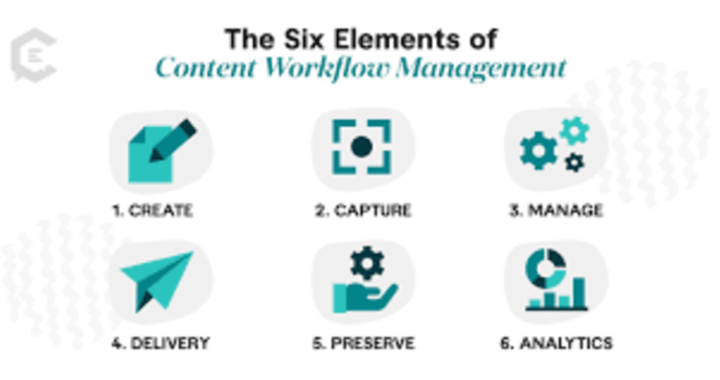Introduction
In the digital era, businesses increasingly rely on content marketing to enhance their brand presence, engage their audience, and drive revenue. This case study examines how a mid-sized e-commerce company leveraged content marketing to achieve significant brand growth, detailing the strategies implemented and the results achieved.
Background
Company: Trend Wear (fictional name)Industry: Fashion e-commerce Challenge: Low brand awareness, high customer acquisition costs, and limited organic traffic
Trend Wear, a growing fashion brand, struggled with visibility in a highly competitive online retail space. Their marketing relied heavily on paid ads, which were costly and delivered diminishing returns. They needed a sustainable strategy to attract, engage, and convert customers without overspending on advertising.
Content Marketing Strategy
To overcome these challenges, TrendWear adopted a robust content marketing strategy centered around three key pillars: blog content, socialmedia engagement, and influencer collaborations.
1. Blog Content and SEO Optimization
Trend Wear launched a blog focused on fashion trends, styling tips, and seasonal must-haves. Key tactics included:
Keyword Research: Identified high-traffic keywords related to fashion and integrated them naturally within articles.
Evergreen & Trending Topics: Published a mix of evergreen content (e.g., “How to Style a White Shirt for Any Occasion”) and trend-driven pieces (e.g., “Top Fashion Trends for Summer 2024”).
Internal Linking: Linked blog articles to product pages, improving on-site navigation and driving sales.
Guest Contributions: Partnered with fashion bloggers and industry experts to write guest posts, enhancing credibility and reach.
Consistent Posting Schedule: Maintained a content calendar to ensure regular updates, keeping the audience engaged and search engines indexing fresh content.
2. Social Media Content & Engagement
Recognizing the power of visual platforms, Trend Wear strengthened its presence on Instagram, Pinterest, and TikTok. Their approach included:
User-Generated Content (UGC): Encouraged customers to share their outfits using the hashtag #TrendWearStyle, rewarding the best posts with discounts.
Interactive Stories & Polls: Used Instagram Stories to run fashion polls, Q&A sessions, and behind-the-scenes looks at new collections.
Short-Form Video Content: Created styling videos, fashion challenges, and behind-the-scenes clips to engage younger audiences on TikTok and Instagram Reels.
Social Media Contests: Organized giveaways and challenges to increase brand visibility and encourage participation from followers.
Community Engagement: Actively responded to comments and messages, fostering a strong relationship with their audience.
3. Influencer & Brand Collaborations
To expand their reach, TrendWear collaborated with micro and macro influencers:
Micro-Influencers (10K–50K Followers): Worked with niche fashion influencers to create authentic brand stories.
Macro-Influencers & Celebrities: Partnered with well-known figures for seasonal campaigns, boosting brand credibility and reach.
Affiliate Marketing: Provided influencers with unique discount codes to track conversions and incentivize promotions.
Live Shopping Events: Conducted Instagram and TikTok live sessions with influencers showcasing new collections, answering questions, and driving real-time sales.
Results & Impact
Within a year of implementing the content marketing strategy, Trend Wear saw remarkable improvements across key performance metrics:
Organic Traffic Growth: Website traffic increased by 120%, with blog articles driving 45% of total visits.
Engagement Metrics: Social media followers grew by 80%, with a 200% rise in engagement (likes, shares, and comments).
Customer Acquisition Cost (CAC) Reduction: CAC dropped by 35% due to the shift from paid ads to organic content marketing.
Revenue Growth: Monthly sales increased by 60%, with content-driven conversions outperforming paid ads.
Brand Recognition: TrendWear’s hashtag (#TrendWearStyle) was used over 50,000 times within a year, enhancing brand visibility.
Challenges & Lessons Learned
While the content marketing strategy proved successful, TrendWear encountered a few challenges:
Consistency in Content Production: Keeping up with a consistent content schedule required additional resources and time investment.
Algorithm Changes: Social media algorithms frequently changed, affecting organic reach and necessitating constant strategy adjustments.
Measuring ROI: Tracking the direct impact of content marketing on sales required robust analytics and attribution models.
Key lessons from the case study include:
Quality Content Builds Trust: Engaging, informative, and SEO-optimized content positions a brand as an industry leader, fostering consumer trust and loyalty.
Social Media is a Brand Amplifier: Platforms like Instagram and TikTok can significantly enhance brand reach, especially when paired with interactive and user-generated content.
Influencer Marketing Drives Authenticity: Collaborating with influencers creates genuine connections with potential customers and boosts brand credibility.
Sustainability Over Time: Unlike paid ads, content marketing compounds over time, delivering long-term value at lower costs.
Data-Driven Decisions Enhance Success: Tracking key performance metrics allows brands to refine their strategies and optimize results continuously.
Future Strategies
Following the success of their content marketing initiatives, TrendWear plans to:
Expand Video Content: Invest further in TikTok, YouTube Shorts, and Instagram Reels.
Enhance Email Marketing: Use blog content to nurture leads through personalized email campaigns.
Launch a Podcast: Discuss fashion trends, sustainability, and styling tips with industry experts.
Leverage AI for Content Creation: Utilize AI-driven tools to enhance content personalization and efficiency.
Conclusion
TrendWear’s success story highlights the transformative power of content marketing. By focusing on valuable content, engaging storytelling, and strategic collaborations, brands can achieve sustainable growth, increase customer loyalty, and drive long-term profitability. Companies looking to reduce reliance on paid advertising and build an organic presence should invest in a well-planned content marketing strategy tailored to their audience. The key to success lies in consistency, adaptability, and leveraging data to optimize efforts for continued growth.
